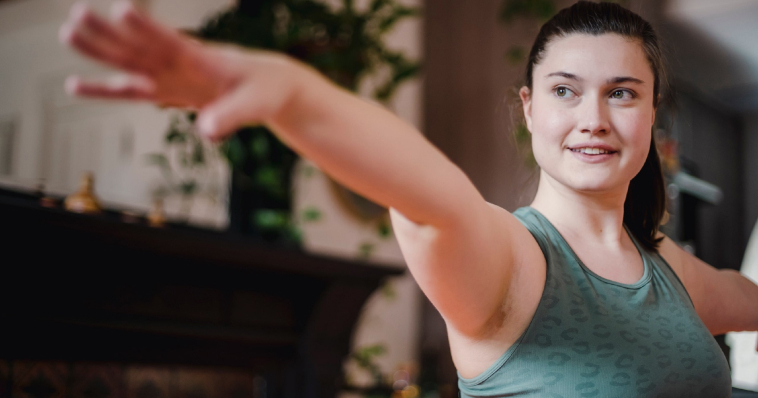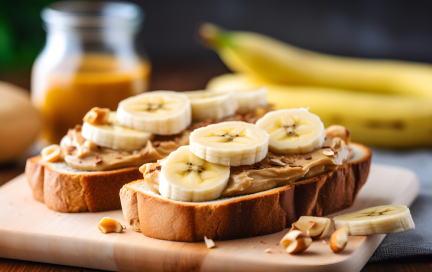{{ banner_block|raw }}
What is a HIIT workout and what’s the secret behind its popularity?
Why have HIIT workouts been so popular for the past decade?
Since 2014, HIIT has remained in the TOP 7 fitness trends because just 10–15 minutes of HIIT can accelerates metabolism and maximize fat burning. The best part? The fat-burning process continues for 24–48 hours after the workout, even while at rest! So, with just three workouts a week, you can achieve impressive results. A simple calculation shows that to lose weight and maintain good physical shape, you only need 45–60 minutes per week of high-intensity training.
What makes HIIT workouts so effective? What’s the secret?
HIIT combines two opposing types of exertion in one program – aerobic and anaerobic. You perform 6 to 12 intervals consecutively without rest. Alternating short bursts of high-intensity exercises (up to 30 seconds) with moderate or low intensity recovery periods (30–90 seconds) helps you build muscle and burn fat simultaneously. What seems incompatible from a physiological standpoint actually works.
The HIIT mechanism
When your body works at maximum capacity for about 30 seconds, it exceeds its aerobic threshold. This pushes you into the anaerobic zone, where your body begins to use carbohydrates for energy. Then, when the intensity drops, fat becomes the primary fuel source.
This rapid alternation between high-intensity efforts and rest periods causes your body to:
- First, use glycogen stored in the muscles as fuel.
- Then, in search of more energy, it switches to burning free fatty acids.
This process speeds up metabolism and promotes fat burning. The increase in fat burning occurs because various tissues in the body increase oxygen consumption when performing exercises at maximum effort, which also boosts improves aerobic endurance.
Another feature of HIIT is the "afterburn" effect. After completing a HIIT workout, your body continues to burns calories for 24–48 hours as its absorbs excess oxygen.

Pros and cons of High-Intensity Training
- HIIT, like circuit training, increases growth hormone levels. But don't worry; despite its name, this hormone doesn’t lead to a bulkier physique. Growth hormone helps build muscle and burn subcutaneous fat.
- HIIT also speeds up glucose metabolism, increasing fat tissues’s sensitivity to insulin and reducing the risk of weight gain, diabetes, and other chronic diseases.
- Research shows that HIIT improves body composition and the oxidative (respiratory) capacity of muscles in overweight/obese women, which directly correlates with improved endurance.
- Short HIIT workouts at home can help you maintain emotional balance, as you’ll to finish your cardio faster.
- HIIT exercises are intense and exhausting, but they are short, keeping your attention fully engaged and making the workout seem quicker.
- For busy people, HIIT at home is a lifesaver. With a well-designed program, you can work all major muscle groups in 15–25 minutes without spending hours commuting to the gym.
- HIIT burns more calories in 15 minutes than 1.5 hours of cardio and strength training.
- Even older people can benefit from HIIT. The largest randomized study on the effects of exercise on older adults showed that HIIT improves quality of life and cardio-respiratory endurance more effectively than moderate physical activity.
What about downsides? Unfortunately, they exist.
Too much HIIT without rest, especially when done daily, can weaken the body and lower overall immunity.
Contraindications for HIIT
Performing exercises at 80% of your maximum heart rate can be dangerous for people with:
- Cardiovascular diseases
- Type 1 diabetes
- Chronic respiratory diseases
- A history of stroke or heart attack
- Obesity — due to the high body mass, there is a risk of overloading the heart. In this case, it is recommended to start with gentler workouts.
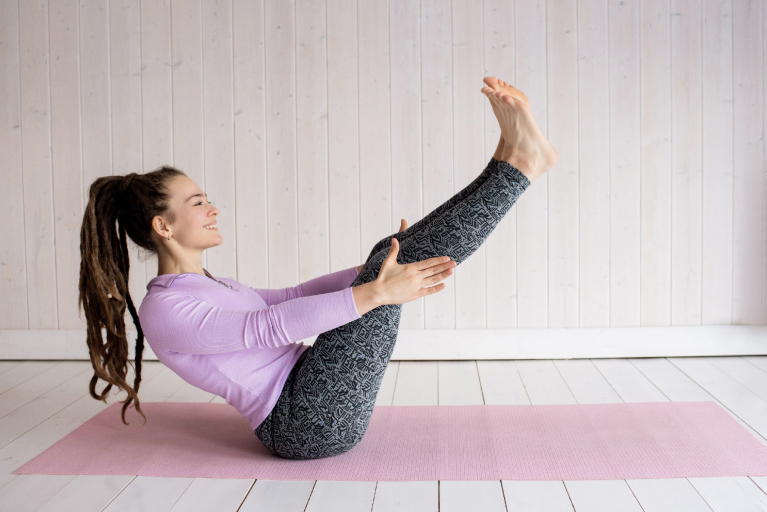
Beginners should not rush into a sprint either – the strict HIIT system is not suitable for complete beginners. Instead, start with entry-level workouts. This also applies to those who were once active but haven’t worked out in a while. It's best to rebuild your physical fitness with aerobic exercises first, and only then start high-intensity workouts.
HIIT vs. Cardio
Losing weight while preserving muscle is challenging. For example, marathon runners, are slim but not muscular despite regular aerobic training. This happens because extended aerobic exercise partially burns muscle tissue.
This is because long-term aerobic exercise partially burns muscle tissue. When you workout at a constant pace, your muscles adapt to the level of aerobic exercise. It might seem like muscle volume decreases and your muscles becomes weaker, but that’s not the case. In fact, smaller muscle tissue means nutrients travel faster, which increases fuel-burning speed.
HIIT workouts, unlike standard cardio, help you burn fat while preserving muscle. The key is the short, intense bursts of activity that trigger fat-burning processes both during and after the high-intensity segments. Functional exercises also stimulate muscle growth.
Who is HIIT suitable for?
There are no specific exercise routines for HIIT workouts — whether at home or in the gym. Personal HIIT home workout programs are tailored to your:
- Personal level of physical fitness
- Age and weight
- Health status
- Availability of sports equipment
However, there are a few general principles to keep in mind when doing HIIT at home.
Mindfulness made easy — and 70% off. Use promo code MEDIUM and start training with us today.
For beginners with a some fitness experience (but not total beginners):
A high-intensity HIIT workout for beginners should lasts no more than 15 minutes, including a 5-minute warm-up and 3–5 minutes of cool-down.
- The high-intensity interval portion should last 5–7 minutes.
- Each intense interval should last no more than 15 seconds, with rest periods lasting 45–60 seconds.
- Recovery time should be 48 hours.
For experienced fitness enthusiasts:
- A complete HIIT workout should last no longer than 25–30 minutes.
- The high-intensity portion should last 15–20 minutes, at 80% of maximum heart rate.
- Each intense session should last no more than 30 seconds, with rest periods lasting 30–60 seconds.
- Recovery time is should be 48 hours.
HIIT workout program
Even if you're short on time and only have 15–20 minutes for a workout, be sure to dedicate the first 5–7 minutes to a proper warm-up. And it shouldn't just be a few quick movements to get the heart rate up. It's essential to warm up sufficiently to prepare your body for the workout and prevent injury. Muscles warm up quickly, but ligaments and joints do not.
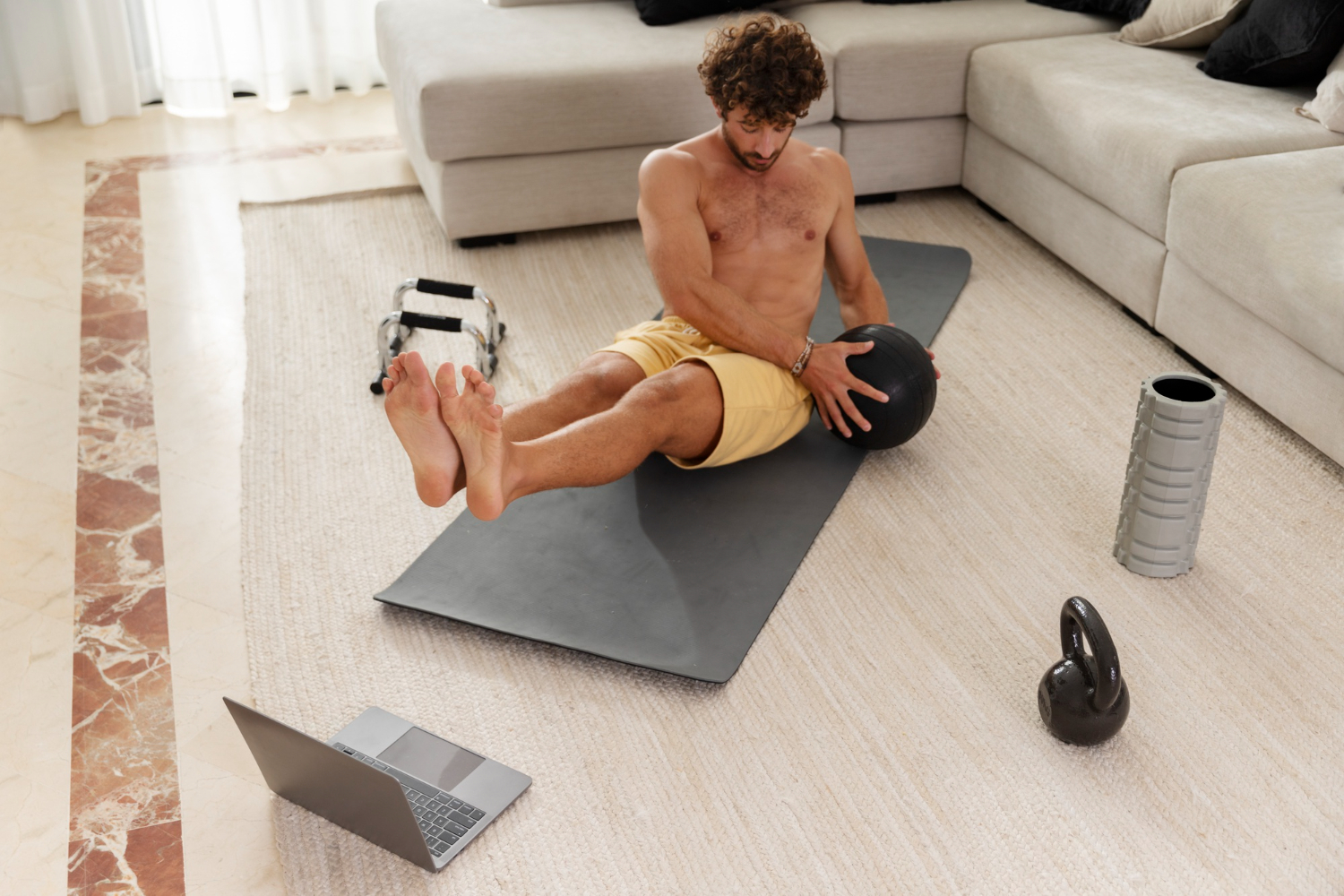
After warming up, move on to the main part of the workout. During the high-intensity sessions, push yourself to your maximum effort, not just speed. During rest, don’t just stand still or collapse on the floor from exhaustion. Perform less intense exercises or practice slow walking.
- Intensity: Squats — 20 seconds. Rest: Marching in place — 40 seconds.
- Intensity: Push-ups — 20 seconds. Rest: Arm relaxation exercise — raise your arms, lower them to the sides, and shake your wrists — 40 seconds.
- Intensity: Jumping jacks — 20 seconds. Rest: Light jogging in place — 40 seconds.
- Intensity: Leg raises with crunches from a lying position — 20 seconds. Rest: 40 seconds.
- Intensity: Jump lunges alternating legs — 20 seconds. Rest: Walk with light leg muscle shakes — 40 seconds.
- Intensity: Classic plank — 30 seconds. Rest: 30 seconds.
- Intensity: Jumping from a half-squat position — 20 seconds. Rest: Walk with light leg muscle shakes — 40 seconds.
- Intensity: Bench dips — 30 seconds. Rest: Arm relaxation exercise — raise your arms, lower them to the sides, and shake your wrists — 30 seconds.
- Intensity: Dynamic plank with alternating shoulder touches using opposite hands. Rest: 30 seconds.
Finish your HIIT workout with stretching exercises.
Recommendations for beginners starting HIIT training
Note: These tips are specifically for those new to HIIT. High-intensity interval training is not suitable for complete beginners in fitness or sports.
- Increase intensity gradually. Start with 15 seconds of high-intensity exercises followed by 45–60 seconds of low activity.
- Monitor your heart rate. Read the next section to understand what your heart rate should be. Use a heart rate monitor or fitness tracker to help with this.
- Keep a workout journal. Record the duration of each session, the exercises you perform, how you feel during the HIIT workout, and your weight. Weigh yourself once or twice a week and also track your body measurements, as these can often give you a clearer picture of progress than just weight alone.
- Choose functional exercises. Select exercises that target all major muscle groups. This way, you can work out your entire body in 15–20 minutes. If you prefer focusing on just one area, like your upper body, do a high-intensity workout for the lower body next time.
- Vary your exercises. Don’t stick to just your favorite moves—step out of your comfort zone and try different routines.
- Don't overdo it. Perform HIIT 2–3 times per week. This helps prevent overtraining and reduces the risk of injury. Insufficient recovery can also lead to metabolic issues. It's ideal to pair HIIT with yoga to stretch your tight muscles and relax.
Heart rate control
Self-monitoring is essential in HIIT, and the easiest way is to control your heart rate (HR). During high-intensity exercises, aim to keep your heart rate at or below 80% of its maximum During rest periods, it your heart rate should drop to around 60–70%.
Formula to calculate maximum heart rate: Multiply your age by 0.7 (this is a fixed value), then subtract the result from 207.
For example, for a 36-year-old woman, the maximum HR would be calculated as follows:
36 x 0.7 = 25.2
207 - 25.2 = 182 beats per minute (bpm).
So, during intense sessions, her heart rate should not exceed 145–150 bpm (80%), and during low-intensity exercises, it should stay around 110–115 bpm (60–70%).
Common mistakes in HIIT training
1. Low training intensity
The term "high-intensity" is there for a reason. HIIT is a workout performed at maximum effort. If after the session all you want to do is collapse and stay still, it means you’ve trained at your limit. If you still have energy left after your session, you didn’t push hard enough, and you won’t see the results you're aiming for.
Note that these workouts are of an advanced difficulty level.
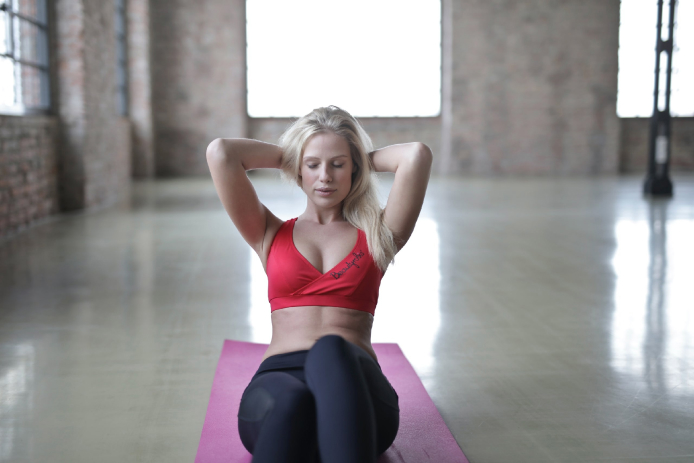
2. Work intervals that are too long
It is generally accepted that a person can maintain maximum intensity for no longer than 30 seconds. After that, performance starts to decline, and the longer the interval, the more significant the decrease in pace. That's why work intervals of 45/60/90 seconds are not considered part of a true HIIT protocol.
3. Insufficient rest between sets
The effectiveness of HIIT depends on how well you recover between sets. That’s why high-intensity exercises must be alternated with rest in a ratio of at least 1:1 or 1:2. A schedule where the rest time is shorter than the intense interval is fundamentally incorrect for HIIT workouts.
4. Choosing isolated exercises
Exercises targeting just one muscle group are not energy-intensive enough for HIIT workouts. Compound exercises (push-ups, lunges, jumps) are ideal for HIIT. These exercises engage multiple muscle groups simultaneously and have the highest energy demand.
